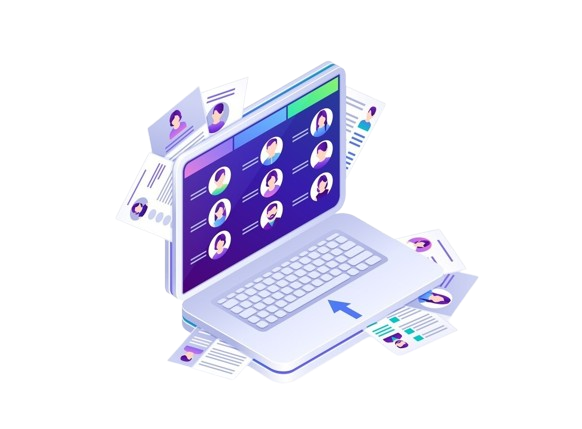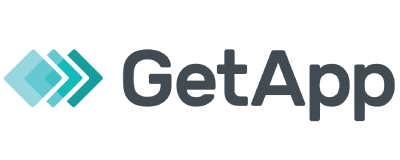The struggle to find the right talent is common for many organizations. In fact, 63% of recruiters say a talent shortage is their biggest problem[1], and 87% of organizations globally either already have skill gaps or expect to within a few years.[2] Traditional hiring tends to be reactive, waiting for openings and then scrambling to fill them. Talent mapping offers a proactive alternative. This strategic approach aligns your talent supply with future business demand, helping recruiters and leaders stay ahead of talent needs. With a global talent shortage of more than 85 million people by 2030, a gap that could result in about $8.5 trillion in unrealized annual revenues, talent mapping has become more critical than ever.[3]
What is Talent Mapping?
Talent mapping is a structured, data-driven approach to analyze the current workforce and align it with future goals, going beyond immediate hiring to build a long-term talent pipeline. It identifies essential skills, evaluates employee strengths, and prepares for future requirements. The process is also a way for employers to pinpoint workforce skill gaps that can be addressed via recruitment or development, ensuring the right people are in the right roles to meet company objectives.[4]
Here are the key activities of the talent mapping process:
- Current talent inventory analysis: TA professionals conduct skill assessments, performance evaluations, and identify high-potential individuals to understand strengths and gaps in a workforce.
- Competitor benchmarking: Other than evaluating the internal workforce, TA professionals would also examine competitors’ talent pools and organizational structures to gauge the external talent market.
- Succession planning: After having all the necessary insights, they can map out who could fill key roles if they open up, focusing on developing a pipeline of future leaders.
- Role segmentation and prioritization: Not every position warrants the same level of focus. So, you need to emphasize roles that are pivotal to organizational success or hard to fill.
- Passive candidate identification: Since an estimated 70% of the workforce is “passive” talent, mapping involves engaging these candidates ahead of time to create a ready pool to tap when a role opens.[5]
- Market intelligence gathering: This market intelligence helps you understand the availability and rarity of certain skills, anticipated hiring difficulties, and even diversity levels in the external talent pool.
Basically, talent mapping is not just about creating lists of names, but rather understanding your current workforce so you can make informed decisions. Think of it as a dynamic “map” of where talent exists, either inside or outside the company, what gaps need addressing, and who could fill key roles now or in the future.[6]
Why is Talent Mapping Important?
Now that you have seen what talent mapping is, you can see that it has moved from a nice-to-have HR exercise to a strategic must-have. Here are several reasons why it is important:
- Anticipating and closing skill gaps: Talent mapping helps organizations to spot emerging skill gaps early and develop strategies to close them. It can be through upskilling current staff or recruiting new talent.[7]
- Aligning talent with business strategy: Rather than filling positions ad-hoc, talent mapping ensures you are building capability in areas that drive long-term goals.[8] For example, your business strategy calls for expanding into new markets or launching a novel product line, talent mapping will focus on the roles and skills needed for that expansion.
- Balancing internal vs. external hiring: Talent mapping helps you optimize internal mobility, filling more roles with insiders, while also showing where external recruitment is necessary. This balancing act can improve retention and reduce reliance on costly external hires.
- Competitive intelligence and benchmarking: Talent mapping doubles as a form of talent intelligence. For instance, mapping might reveal that a competitor has built an entire data science team in a city known for tech talent, signaling where you might also source similar talent. It can show how your competitors structure their departments and what talent profiles they hire, informing your own talent acquisition strategy.
- Engaging passive talent proactively: There are many passive candidates, and traditional recruiting might miss these high-quality individuals. Talent mapping solves this by identifying and building relationships with them ahead of time. This way, when a role opens up, you already have interested candidates ready to contact, which speeds up hiring..
Types of Talent Mapping
Talent mapping isn’t one-size-fits-all. There are a few different approaches or “types” of talent mapping, depending on the scope and objectives. Below are some common types of talent mapping, each with a distinct focus:
Note: These categories often overlap. For instance, a comprehensive talent mapping initiative might include internal assessments and external market mapping simultaneously. The key is that each type serves a different strategic purpose – from strengthening internal pipelines to scouting what’s outside your walls.
Costs of Talent Mapping & Associated Hiring Processes
While talent mapping yields many benefits, it’s important to acknowledge that it requires investment of time, effort, and sometimes money. Here are some costs related to talent mapping:
- Cost‑per‑hire and Time-to-hire: U.S. companies spend around $4,700 on average per hire.[9] Plus, hiring cycles can take over a month; about 24 days from screening a candidate to offer acceptance on average. [10]
- Training & onboarding: Organizations invest heavily in development, roughly $400 to $1,050 per employee on training (depending on company size), with U.S. training spend totaling about $98 billion in 2024.[11]
- Organizations often spend between $398–$1,047 per employee on training, with total training budgets reaching $98 billion in FY 2023–24.[12]
- Turnover cost multiplier: Employee exits can cost a range from 50% to 200% of the employee’s annual salary.[13]
- Technology & data integration: Implementing/connecting ATS, HRIS, LMS, analytics tools, and data warehouses can often cost $10K–$100K+ per year. But companies that do this effectively have seen 47% productivity gains, 73% better reporting accuracy, and even two-fold increases in employee engagement, highlighting both cost and strategic value.[14]
- Employer branding & candidate engagement: Building and maintaining a compelling employer brand, especially to attract passive talent, involves ongoing content, marketing support, and technology to track engagement, an essential but often overlooked investment.[15]
- Vacancy & opportunity costs – Beyond direct recruitment expenses, unfilled roles drag down productivity, with McKinsey estimating lost output totaling hundreds of millions annually for mid-sized companies.[16]
- Talent reviews & succession planning – Mapping internal successors for critical roles needs senior-leadership time, structured reviews, and support systems, translating to indirect costs in people hours and resources.[17]
- Analytics & ROI tracking – Tracking key talent metrics (time-to-fill, retention, quality-of-hire, pipeline strength) requires dedicated analytics time and tools, ensuring alignment with organizational objectives.[18]
How to Implement Talent Mapping in 6 Steps
Implementing talent mapping can seem like a daunting project, but breaking it into clear steps makes it manageable. Below is a 6-step roadmap to successful talent mapping that will help ensure your initiative is methodical and aligned with your business needs:
- Define Strategic Workforce Needs: Clarify where your organization is heading: new markets, product lines, or digital initiatives. Map the roles and critical skills needed to navigate this future.Action: Partner with leadership to articulate 3–5‑year goals and align talent needs to each strategic objective.[29]
- Research External Talent Market: Analyze external data via LinkedIn, industry reports, and TA networks to benchmark against competitors and industry standards. This way, you can identify where critical skills are scarce, emerging roles are trending, or passive talent is shifting.[30]
- Collect Internal Talent Data: Build a clear picture of the skills and potential within your organization by gathering internal talent data. A skills taxonomy can help organize and label the different skills employees have. You can also connect your HR system with tools like to better visualize this data.
Key sources include:
- HR Information System (HRIS): Use data from your HR system, such as employee roles, backgrounds, training history, and past performance.
- Performance Reviews: Look at previous performance reviews to see who has done well, who needs support, and where there may be room for growth.
- Manager Interviews: Talk to managers to get their views on employee strengths, skills, and development needs.
- Skills Assessments: Run tests or evaluations to see what specific skills employees have and how strong they are in those areas.
- Employee Surveys: Ask employees directly about their career goals, what skills they want to develop, and how engaged they feel at work.[31]
- Identify Talent Gaps & Prioritize Roles: Determine where there may be skill shortages by examining the skills employees have with those needed. Then, decide if you will either train existing workers or recruit new employees to fill those roles.[32]
- Build Talent Pipelines & Engage Candidates: Once you have identified the current skill gaps, create a talent database of strong internal and outside talent you have identified. You can access this pool of quality hires when required, avoiding potential talent shortages and reducing the time-to-hire when filling key positions.[33]
- Monitor, Update, and Optimize Talent Maps: Talent mapping is an ongoing process. As time goes by, your organization’s needs are going to change.
Here’s how you can do it
- Quarterly Check-Ins: Meet with your HR and leadership teams every quarter. Go over your talent map and see if it still matches where the company is headed. Update it if your goals or priorities have changed.
- Track Key Numbers: Keep an eye on promotion rates, how fast you’re filling roles, and employee turnover. These numbers show whether your talent mapping is working or needs a tweak.
- Take Action Every Quarter: Hold a quarterly review meeting.
In that session:
- Refresh your talent map.
- Check on your talent pipeline.
- See if your development plans are helping people grow.[34]
Tools and Solutions for Talent Mapping
Using the right HR tools can make talent mapping much easier. Since the process involves a lot of data, technology helps you work faster, more accurately, and with less hassle. Below are some tools and examples, like an AI-powered recruitment platform, that can support your talent mapping efforts.
- AI-Powered Recruitment Platforms:
A modern applicant tracking system (ATS) like Manatal enhance talent mapping with advanced AI features by:
- Centralizing candidate data: Consolidates all candidate information into one accessible location.
- Scoring matches to job roles: Evaluates candidates based on job requirements using AI-based relevance scoring.
- Suggesting the best fits: Automatically recommends top-matching candidates for open roles.
- Enriching profiles with external data: Pulls in publicly available information (e.g., social media, online profiles) to enhance candidate profiles.
- Tracking interactions and managing follow-ups: Functions like a CRM for passive candidates, recording communication history and reminders.
- Providing built-in analytics: Offers insights on pipeline strength, time-to-hire, and overall recruitment efficiency.
{{cta}}
2. Talent Management and Analytics Tools: Beyond recruitment tools, talent mapping also relies on systems that track internal employees. These include HRIS and talent intelligence platforms that organize and analyze employee data.
Key Features:
- Store data on employee skills, performance, and career history.
- Provide dashboards and predictive analytics.
- Flag potential flight risks or future leaders.
- Track development and performance.
- Support succession planning.
Identify skill gaps and suggest career paths.
Examples of Tools:
- Workday.
- Fuel50.
3. Market Intelligence and Sourcing Tools: External talent mapping tools help you scan the job market quickly and accurately.
Key Features:
- Show how many people have a certain skill or title in a specific location.
- Reveal where those people work and provide demographic breakdowns.
- Search passive candidates across multiple databases and social networks.
- Apply filters to find talent by employer, title, skills, or diversity criteria.
- Use AI to predict when someone might be open to new opportunities.
- Replace manual research with instant, data-driven talent lists.
Examples of Tools:
- LinkedIn Talent Insights.
- AmazingHiring.
4. Org Chart and Skill Mapping Software:Visual tools can make talent mapping easier to understand and manage.
Org Chart Tools:
- Help visualize your current org structure and future team plans.
- Integrate with HR systems to auto-update roles and reporting lines.
- Let you overlay data like performance or readiness directly on the chart.
- Examples: OrgChart Plus, Lucidchart (with HR integrations.)
Skill Mapping Tools:
- Track what skills your employees have and where the gaps are.
- Include pre-built skills libraries and assessment tools.
- Allow quick searches like “who knows Python” or “who completed leadership training.”
- Examples: iMocha, other skills management platforms.
5. Free resources and DIY approaches: You don’t need a big budget to start talent mapping. Simple tools can do the job.
Low-Cost Tools and Methods:
- Use spreadsheets (e.g., Excel) to build a basic talent map or talent matrix.
- Track key roles, internal candidates, and external prospects in one place.
- Search manually on LinkedIn and industry forums for external talent.
- Use free market data from sites like Glassdoor, Payscale, or government databases.
- Tap into Employee Referral Programs to map talent through your team’s networks.
- Download free templates for succession planning and talent reviews to adapt for mapping.
Best Practices for Effective Talent Mapping
Drawing from industry experience and successful implementations, here are some best practices to ensure your talent mapping efforts deliver maximum value:
1. Align Talent Mapping with Business Strategy
The most effective talent mapping processes are those that are tightly aligned with the organization’s strategy and goals. This means HR and business leadership need to be on the same page from the outset. Start with clarity on business objectives, whether it’s scaling into new markets, driving innovation in a product line, or preparing for a wave of retirements. Then design your talent mapping around those needs.[35]
2. Leverage Data Analytics and AI in Talent Mapping
Modern talent mapping should be a data-driven exercise. Use analytics and AI tools to make your mapping more precise and insightful. One essential aspect of this process is understanding Talent Distribution, Location Analysis, and AI-Powered Analytics. Strategic talent distribution is crucial for organizations seeking to optimize their workforce and align human resources with business objectives. By understanding and analyzing where talent is located, companies can place employees where their skills are most needed, ensuring operational efficiency and competitive advantage.[36]
Case Study: Talent Mapping in Action
To illustrate the power of talent mapping, let’s look at a real example of a company that implemented it and reaped clear benefits:
Dotmatics (Tech Company Scaling a Dev Team)
A tech firm looking to expand its software development team in Eastern Europe used talent mapping to guide its hiring strategy.
Key Outcomes:
- Within 12 months, Dotmatics successfully hired 30 skilled software engineers.
- This rapid ramp-up was driven by a well-executed mapping initiative that identified qualified profiles and mapped critical skills across the region.[37]
Conclusion
Talent mapping helps companies stay ahead by aligning talent strategies with future business needs. Instead of reacting to vacancies, organizations proactively identify and develop the talent they’ll need. This ongoing process—combining workforce planning, market research, and succession strategy—builds agility and resilience. While it requires collaboration and data-driven practices, the payoff is clear: faster hiring, stronger leadership pipelines, and better readiness for change. In a fast-moving, competitive market, talent mapping is a smart way to shape the future, not just respond to it.
Frequently Asked Questions
Q: What is the difference between talent mapping and workforce planning?
A: Talent mapping and workforce planning are strategic HR practices with distinct purposes. Talent mapping identifies and assesses internal and external candidates' skills and potential to build a talent pipeline for future roles. In contrast, workforce planning involves predicting and organizing the future workforce needs based on long-term business objectives, taking into account factors like retirements, turnover, and economic changes. Essentially, talent mapping focuses on individual capabilities, while workforce planning aligns human resources with the organization's strategic goals.
Q: How often should talent maps be updated?
A: Talent maps should be updated regularly, typically at least annually, to align with an organization's changing strategic goals, market conditions, and workforce dynamics. In fast-paced industries or during significant changes, more frequent updates, like quarterly reviews, may be necessary. Regular updates help identify skill gaps, emerging talent needs, and succession planning opportunities, allowing organizations to remain agile and competitive by ensuring the right talent is in place for current and future challenges.
Q: Can talent mapping help with diversity hiring?
A: Talent mapping aids diversity hiring by offering a strategic method to identify and engage diverse talent. It helps organizations assess diversity levels, spot representation gaps, and set goals to attract underrepresented groups. This approach ensures inclusive hiring practices and establishes a pipeline of diverse candidates, further fostering an inclusive culture and driving innovation and growth.
Q: What tools are best for talent mapping?
A: Talent mapping is a strategic process used to assess current and future talent needs in an organization. Tools such as HR management systems like SAP SuccessFactors and Workday, talent mapping software like LinkedIn Talent Insights, and workforce analytics tools like Visier and Tableau are effective for supporting this process. These tools help organizations track performance, understand talent trends, and make informed decisions about recruitment and development efforts.
Q: Is talent mapping only for large companies?
A: Talent mapping is a beneficial strategy for organizations of all sizes, not just large companies. It helps identify necessary skills and competencies for achieving strategic goals and is particularly valuable for small and medium-sized enterprises (SMEs) by aiding in strategic growth planning and addressing skill gaps cost-effectively. By understanding the current and future talent landscape, companies can enhance their hiring and training processes, thereby fostering innovation and maintaining competitiveness. Overall, talent mapping supports aligning the workforce with an organization's long-term objectives.
—
Citations
- McKinsey
- Korn Ferry
- Ripplin
- inFeedo
- Rippling
- Adecco
- Cadient
- AIHR
- Trainingmag
- SHRM
- Investopedia
- Gallup
- HR News
- McKinsey
- Talent Insight Group
- draup
- Info Recruitics
- Tallo
- Rippling
- Maptimise
- Maptimise
- Rippling
- Austcorp
- Business Case Studies
- Armstrong Craven
- W Talent Solutions
- TalenTeam
- Austcorp
- Recruiter Flow
- The OrgChart
- Indeed
- Rippling
- Teamflect
- DSD Recruitment
- draup





.png)






















.webp)

.webp)

.webp)
